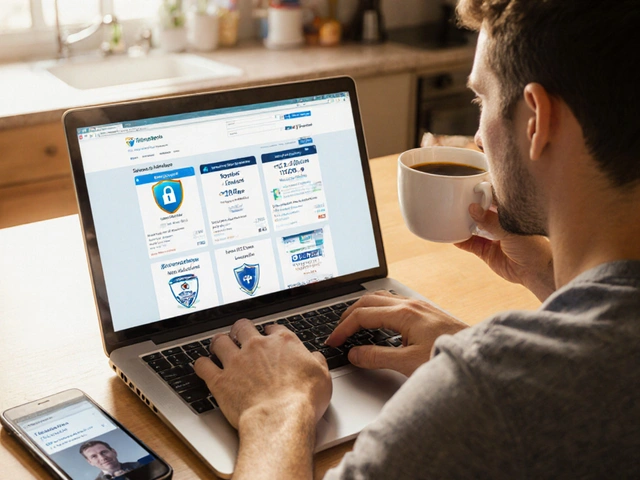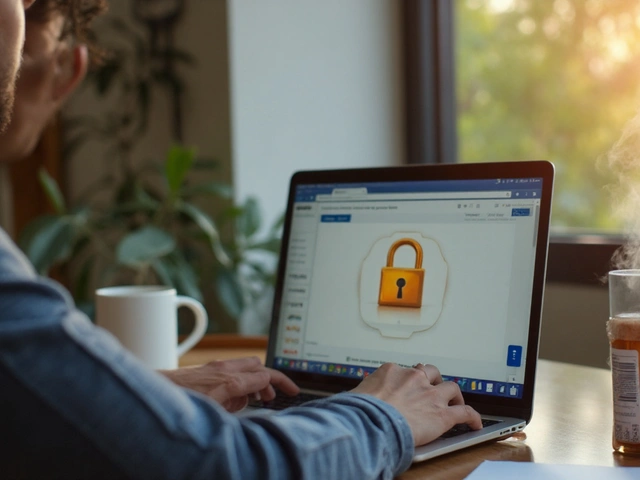Getting your medication right isn’t just about picking up the prescription. It’s about taking it when you’re supposed to, how you’re supposed to, and consistently-day after day, week after week. For people managing chronic conditions like high blood pressure, diabetes, or heart failure, missing even a few doses can mean hospital visits, worsening symptoms, or worse. Yet studies show nearly half of patients don’t take their meds as prescribed. The good news? Tracking adherence isn’t as hard as it seems-and the right tools can make all the difference.
Why Medication Adherence Matters More Than You Think
When you skip doses or take pills at the wrong time, your body doesn’t get the steady level of medicine it needs. This isn’t just about feeling unwell-it’s about real health risks. For heart failure patients, poor adherence increases hospital readmission rates by up to 40%. For those on blood thinners or diabetes meds, a single missed dose can trigger a stroke or dangerous spike in blood sugar.
The financial toll is staggering. In the U.S. alone, non-adherence costs the healthcare system over $300 billion every year. That’s not just insurance bills-it’s lost workdays, emergency room trips, and preventable complications. And it’s not because people are lazy. Many forget. Others are overwhelmed by complex regimens. Some can’t afford their meds. Others worry about side effects and stop taking them without telling their doctor.
Tracking adherence isn’t about punishment. It’s about understanding what’s really happening-and fixing it before things go wrong.
Paper Medication Lists: The Simple Start
Before you buy apps or smart pillboxes, start with the oldest tool in the book: a piece of paper and a pen.
A basic medication list should include:
- Drug name (brand and generic, if different)
- Dosage (e.g., 10 mg, 500 mg)
- Frequency (e.g., once daily, twice a day)
- Time of day (e.g., with breakfast, at bedtime)
- Purpose (e.g., "for blood pressure," "for pain")
- Prescriber’s name and contact info
Then, create a simple log next to it. Each day, check off when you’ve taken each pill. Use a grid: one row per medication, one column per day. You can even color-code-green for taken, red for missed.
Why this works: Writing it down creates a mental anchor. You’re less likely to forget if you see the empty box staring back at you. It also gives your doctor a clear picture-not guesses, not "I think I took it."
But here’s the catch: paper logs are only as good as the person filling them out. A 2020 University of Michigan study found that 42% of patients intentionally falsified their paper logs-either to please their doctor or because they felt guilty. That’s why paper alone isn’t enough for high-risk patients.
Digital Tools: When Paper Isn’t Enough
If you’re juggling five or more medications, have memory issues, or live alone, digital tools offer real advantages. They don’t just track-you get reminders, alerts, and data your doctor can see in real time.
Here are the most effective types:
Smart Pillboxes (IoT Devices)
Devices like the Tenovi Pillbox don’t just beep. They connect to your phone via Bluetooth and send data to your care team. When you open the box, it logs the time. If you miss a dose, it sends a reminder. After three missed doses, your pharmacist might get a notification.
These boxes use LED lights: red means "take now," green means "done." No confusing menus. No passwords. Just a simple visual cue. In user reviews, 78% of people say this feature helped them stick to their schedule.
But they’re not perfect. In rural areas, cellular or Wi-Fi signals can be weak. One in three users on Trustpilot reported connectivity issues that made the device unreliable.
Medication Apps
Apps like Medisafe, MyTherapy, and Mango Health let you set alarms, scan pill bottles, and log doses with a tap. Many sync with Apple Health or Google Fit. Some even include mood trackers or symptom logs.
The best ones use AI. Medisafe Predict+, cleared by the FDA in May 2023, analyzes your behavior-when you open the app, how often you snooze alarms, even your sleep patterns-to predict if you’re likely to miss a dose 72 hours ahead. It then nudges you with a personalized message: "You usually take your pill after lunch. Want to set a reminder?"
Video Directly Observed Therapy (VDOT)
This isn’t for everyone, but for patients on high-risk meds-like tuberculosis drugs or psychiatric medications-VDOT can be life-saving. You take your pill while on a video call with a nurse. They watch you swallow it. It’s 98.5% accurate.
The downside? Each session takes 17 minutes. That’s not practical for daily use. But for someone struggling with adherence, a few weekly sessions can rebuild the habit.

What Works Best? Accuracy Compared
Not all tracking methods are created equal. Here’s how they stack up:
| Method | Accuracy | Pros | Cons |
|---|---|---|---|
| Self-reported paper logs | 27% | Free, simple, no tech needed | Highly inaccurate; often falsified |
| Pill counts (pharmacist checks) | 60% | Common in clinics | Only shows what’s left, not when it was taken |
| Electronic monitoring caps (MEMS) | 97% | Gold standard in research; detects exact timing | Expensive; not widely available to patients |
| Smart pillboxes (Tenovi, etc.) | 94% | Real-time alerts, works with doctors’ systems | Requires internet; can fail in rural areas |
| Video observation (VDOT) | 98.5% | Verifies ingestion, not just opening | Time-intensive; privacy concerns |
Bottom line: If you want to know what’s really happening, don’t rely on memory or paper. Use a device that records the moment you open the pill container.
Who Benefits Most?
Not everyone needs a smart pillbox. But some people absolutely do.
Best for digital tracking:
- People taking 5+ daily medications
- Those with memory problems or dementia
- Patients with chronic heart, kidney, or liver disease
- People who’ve been hospitalized for non-adherence before
Best for paper logs:
- Older adults who prefer low-tech solutions
- People with limited internet access
- Those just starting to track adherence
Age matters. A 2023 Kaiser Permanente study found 92% of patients under 55 adopted digital tools easily. But only 47% of Medicare patients over 75 did. Why? Tech fear. Confusing interfaces. Lack of support.
That’s why the best programs pair tech with human help. At Cleveland Clinic’s Connected Care Platform, patients get a Tenovi pillbox and a pharmacist who calls weekly to review data. Their adherence rate jumped from 76% to 89%.
How to Get Started
Ready to track your meds? Here’s how to begin:
- Make your list. Write down every pill, supplement, and inhaler. Include doses and times. Ask your pharmacist to double-check it.
- Choose your method. If you’re tech-savvy and have good internet, try a smart pillbox or app. If you’re not, start with paper. You can upgrade later.
- Set up reminders. Use your phone, a kitchen timer, or a smart speaker. Say: "Alexa, remind me to take my blood pressure pill at 8 a.m. and 8 p.m. daily."
- Share the data. Give your log or app report to your doctor every visit. Don’t wait for them to ask.
- Review monthly. Did you miss doses? Why? Was it forgetfulness? Side effects? Cost? Talk to your doctor about solutions.

The Big Problem No One Talks About
Here’s the truth: almost all tracking tools-smart boxes, apps, even video calls-only know when you opened the pill bottle or tapped "taken." They don’t know if you actually swallowed it.
That’s a huge gap. Someone could open the bottle and dump the pill in the sink. Or take it with a sip of water and then spit it out. That’s called "pocketing"-and it’s common with psychiatric meds. Studies show this creates a 12.3% false adherence rate.
That’s why the future isn’t just about tracking-it’s about verifying. Researchers are now testing wearables that detect drug levels in sweat or saliva. Imagine a smartwatch that tells your doctor your blood pressure med is working-not just that you took it.
But until then, the best tool is still a person who cares. A nurse who calls. A family member who checks in. A pharmacist who remembers your name.
Final Thoughts
Tracking your meds isn’t about being perfect. It’s about being aware. Every missed dose is a data point-not a failure. Every logged pill is progress.
Start simple. Use paper if that’s all you need. Upgrade to a smart box if you’re struggling. But whatever you do, don’t guess. Don’t hope. Track it. Your body-and your doctor-will thank you.
What’s the most accurate way to track medication adherence?
The most accurate method is electronic monitoring using MEMS (Medication Event Monitoring System) caps, which record each time a pill bottle is opened with 97% accuracy. For patients, smart pillboxes like Tenovi offer nearly the same accuracy (94%) and send real-time data to caregivers. Video Directly Observed Therapy (VDOT) is even more accurate at 98.5% because it confirms ingestion, but it’s time-consuming and not practical for daily use.
Are paper medication logs reliable?
Paper logs are not reliable on their own. Studies show they’re only about 27% accurate because people often forget to log doses or intentionally falsify entries to please their doctor. They’re useful as a starting point or for low-tech users, but they shouldn’t be the only method for high-risk patients or complex regimens.
Can I use my phone to track my medications?
Yes, several apps like Medisafe, MyTherapy, and Mango Health let you set reminders, log doses, and sync with health trackers. Some, like Medisafe Predict+, even use AI to predict when you’re likely to miss a dose and send personalized nudges. They’re great for people comfortable with smartphones and who have consistent internet access.
What if I can’t afford a smart pillbox?
Many clinics and pharmacies offer smart pillboxes for free or at low cost through insurance programs, especially for Medicare Advantage patients. Ask your pharmacist or care team. You can also use free apps, alarm clocks, or even sticky notes on your mirror. The goal isn’t the device-it’s consistent tracking.
Why do some people lie about taking their meds?
Many patients fear being judged or told they’re not "good patients." Others feel guilty, embarrassed, or overwhelmed. Some can’t afford their meds and hide it. A 2020 study found 42% of chronic disease patients falsified their paper logs-not because they’re dishonest, but because the system makes them feel ashamed. The solution isn’t punishment-it’s trust and support.
Do Medicare plans cover medication tracking devices?
Yes, starting in 2024, Medicare will reimburse providers for Remote Therapeutic Monitoring (RTM) services under CPT codes 98980-98981, which include medication adherence tracking. Many Medicare Advantage plans already cover smart pillboxes for patients with chronic conditions like heart failure or COPD. Ask your doctor or plan representative if you qualify.
How long does it take to see results from tracking adherence?
Improvements can show up in as little as 4-6 weeks. A 2021 Kaiser Permanente study found that patients using digital trackers had 23% fewer hospital readmissions within three months. The key is consistency-tracking daily and sharing data with your care team so they can adjust your plan quickly if problems arise.
Can medication tracking help with mental health meds?
Yes, but with caveats. For depression, bipolar disorder, or schizophrenia, adherence is critical-but many patients stop taking meds because they feel better or dislike side effects. Smart trackers help identify patterns, but they can’t verify ingestion. For high-risk cases, video observation (VDOT) or in-person check-ins with a therapist or case manager are more effective than tech alone.
Next Steps
Start today. Grab a notebook. Write down your meds. Set one alarm. That’s it. You don’t need a fancy gadget to begin. What you need is awareness-and the willingness to ask for help when things get hard.
If you’re a caregiver, don’t just remind your loved one to take their pills. Ask them: "What’s the hardest part?" Listen. Then help them find the right tool-paper, app, or device.
Medication adherence isn’t about compliance. It’s about control. And with the right system, you can take it back-one pill at a time.






Post A Comment